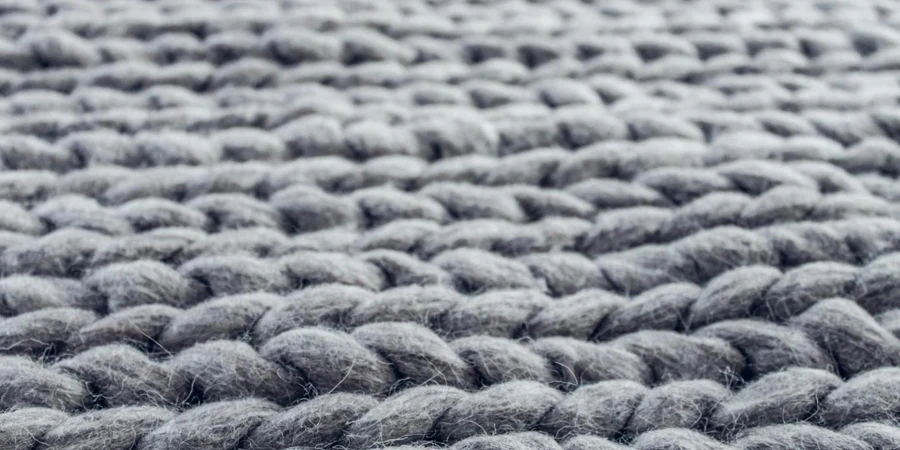Table of Contents
● Introduction
● Market overview
● Key design and material innovations
● Top sellers driving market trends
● Conclusion
Introduction
Rug sets play a pivotal role in transforming the aesthetic and comfort of any space. These versatile decor elements not only add warmth and style but also define and anchor different areas within a room. As the demand for home improvement grows, the rug market is witnessing significant innovations and trends. With advanced materials, customizable designs, and sustainable practices, modern rug sets cater to diverse consumer preferences. The integration of smart home technologies further enhances the functionality and appeal of these rugs, making them an essential part of contemporary interior design. As a result, staying updated with the latest trends and innovations in rug sets is crucial for consumers and industry players alike, ensuring that they can make informed choices that enhance the beauty and comfort of their living spaces. This evolving landscape underscores the importance of rugs in creating stylish, comfortable, and personalized environments.
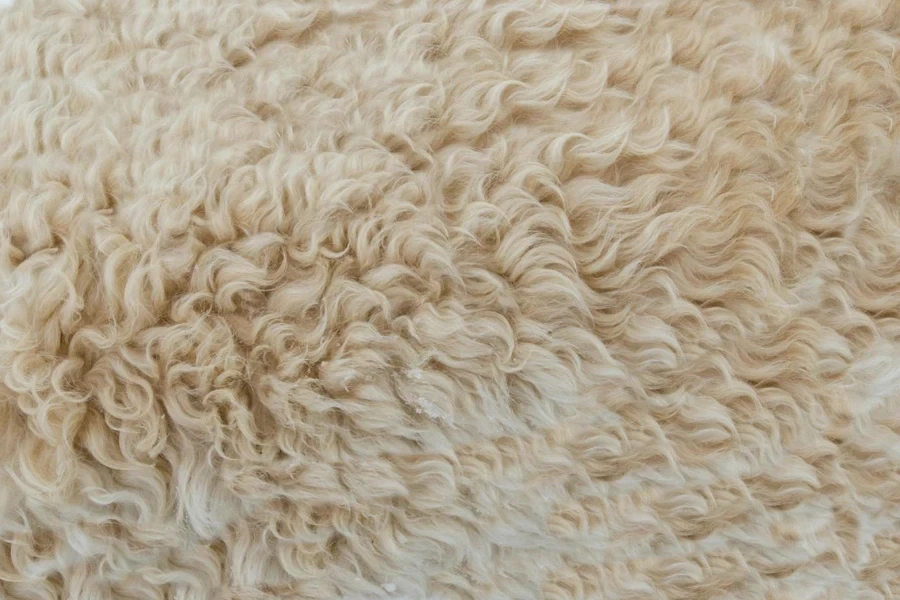
Market overview
The global rug market is set to expand significantly, with its value projected to grow from USD 93.5 billion in 2024 to USD 171 billion by 2034, reflecting a compound annual growth rate (CAGR) of 6.2%, according to Future Market Insights. This growth is fueled by increasing consumer emphasis on home aesthetics, rising disposable incomes, and the growing trend of home improvement. Key markets such as the United States, United Kingdom, China, Japan, and South Korea are driving this expansion, bolstered by urbanization and the surge in e-commerce platforms that make a diverse range of rugs accessible to a broader audience. Additionally, the popularity of modular and open-concept living spaces has heightened the demand for rugs as essential decor elements that define and anchor different areas within a room.
Several emerging trends are also shaping the market dynamics. Sustainability remains a crucial factor, with consumers increasingly seeking eco-friendly rugs made from recycled materials and low-emission production processes. Innovations in design and materials are also prevalent, with trends such as bold patterns, textural elements, and vintage-inspired styles gaining traction. The integration of smart home technologies is another significant trend, with rugs featuring advanced functionalities like temperature regulation and floor tracking becoming more popular. According to sources like The Spruce and House Beautiful, these innovations cater to the modern consumer’s preferences for both aesthetic appeal and practical benefits. The emphasis on sustainability, combined with technological advancements and evolving design trends, is expected to sustain the robust growth of the rug market in the coming years.
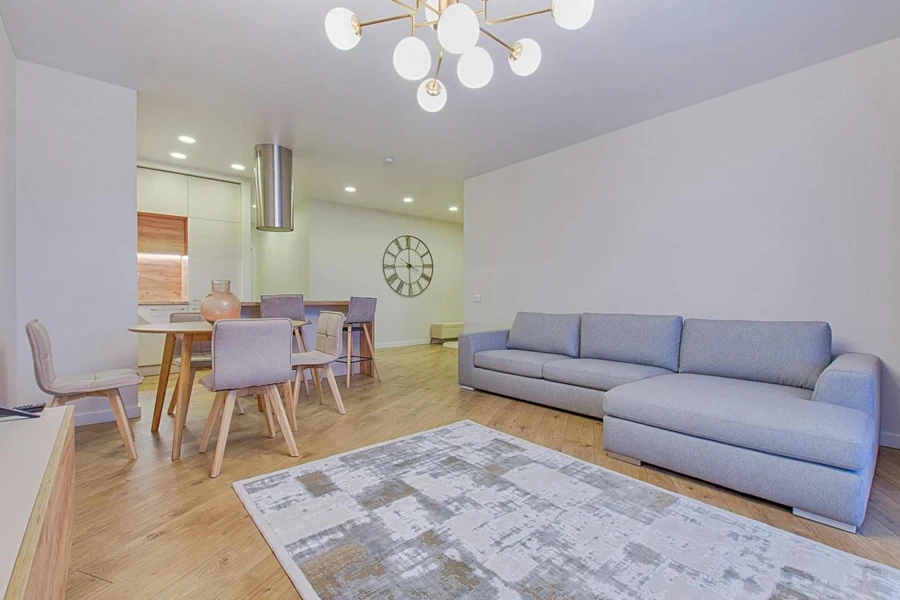
Key design and material innovations
Sustainability
Sustainability has become a cornerstone of the rug industry, driven by increasing consumer awareness and demand for eco-friendly products. Manufacturers are now utilizing recycled fibers, organic materials, and low-emission dyes to create rugs that minimize environmental impact. For instance, many companies are incorporating materials like recycled polyester from plastic bottles, wool from sustainably managed sheep farms, and natural dyes derived from plants. According to Future Market Insights, these eco-conscious choices not only appeal to environmentally aware consumers but also contribute to a broader movement towards sustainable home decor. This shift is not only beneficial for the environment but also positions these manufacturers as leaders in responsible production practices.
Workmanship
The artistry involved in rug-making is another critical aspect that continues to captivate consumers. Hand-knotted rugs, which can take months or even years to produce, are celebrated for their durability and intricate patterns. Each knot is tied individually, allowing for unparalleled precision and the creation of complex designs. These rugs are typically lighter and easier to move, which adds to their appeal in dynamic living spaces. Hand-tufted rugs, produced by punching strands of wool into a canvas, provide a more affordable yet elegant option that bridges traditional craftsmanship and modern efficiency. This technique allows for quicker production times while still offering a high degree of customization and intricate patterns.
Pattern and textures
Patterns and textures are evolving with contemporary trends, with designers experimenting with bold, geometric patterns, rich textures, and vibrant color combinations. This trend reflects a broader shift towards personalization and uniqueness in home decor. According to Durian, the ability to mix and match different patterns and textures allows homeowners to create dynamic and visually engaging spaces. For example, combining a plush, shaggy rug with sleek, modern furniture can create a striking contrast that enhances the overall design of a room.
Technological advancement
Technological advancements have significantly impacted the rug industry, introducing new materials and production methods that enhance both aesthetics and functionality. Smart textiles, which include features like stain resistance and enhanced durability, are becoming increasingly popular. These textiles are treated with advanced coatings that repel liquids and resist stains, making them ideal for high-traffic areas or homes with children and pets. Digital printing technology allows for precise, intricate designs that were previously difficult to achieve with traditional methods.
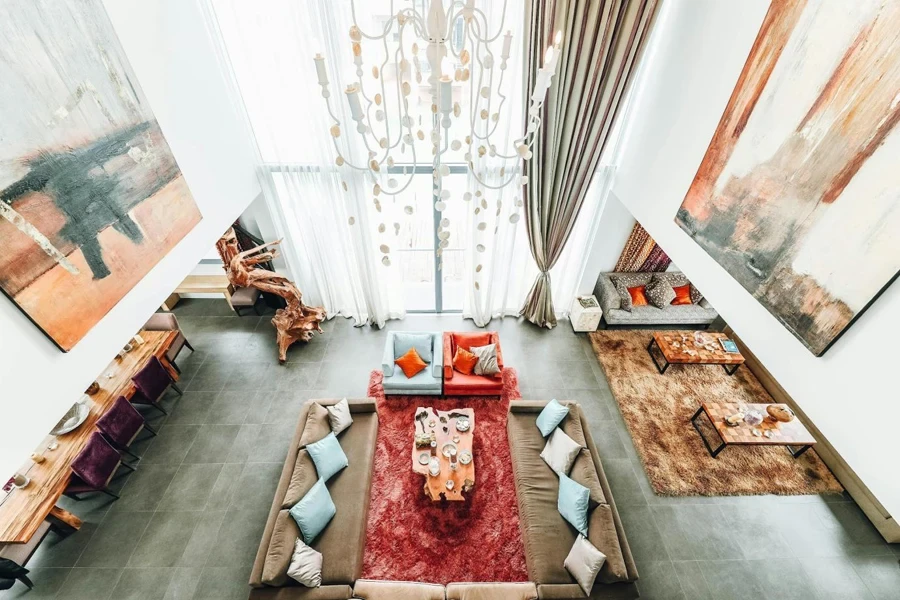
Customization
Customization has emerged as a significant trend, with consumers seeking personalized rug sets that reflect their individual style and functional needs. This demand for customization has led to the development of tools and platforms that allow customers to choose from various patterns, colors, sizes, and materials. According to Home Looks, this trend towards personalization ensures that each rug set is unique, catering to specific tastes and enhancing the overall aesthetic of a home. This flexibility has made rugs an essential element in interior design, providing both practical benefits and a means of personal expression.
Fusion with modern design
Additionally, the fusion of traditional craftsmanship with modern design elements is creating a new category of hybrid rugs. These rugs combine classic techniques like hand-knotting with contemporary materials and patterns, offering the best of both worlds. For example, a rug might feature a traditional Persian design but be made with recycled synthetic fibers, providing both a nod to history and a commitment to sustainability. This blend of old and new is particularly appealing to consumers who appreciate the rich heritage of rug-making but also want to support eco-friendly practices.
Smart rugs
Another notable innovation in rug design is the integration of technology for enhanced functionality. Smart rugs equipped with sensors can monitor foot traffic, detect spills, and even provide data on room usage patterns. These rugs can be particularly useful in commercial settings or smart homes, where integrating various elements into a cohesive system can improve efficiency and convenience. For example, a smart rug in an office might track how often different areas are used, helping to optimize space planning and furniture placement.
Maximalism
In the realm of aesthetics, there is a growing trend towards maximalism, where more is more. This design philosophy embraces bold colors, intricate patterns, and a mix of textures to create visually stimulating environments. Maximalist rugs often serve as the centerpiece of a room, tying together various elements and adding a sense of drama and luxury. Conversely, minimalist designs are also gaining traction, focusing on simplicity, clean lines, and neutral tones. These rugs often emphasize texture over pattern, creating a serene and understated elegance.
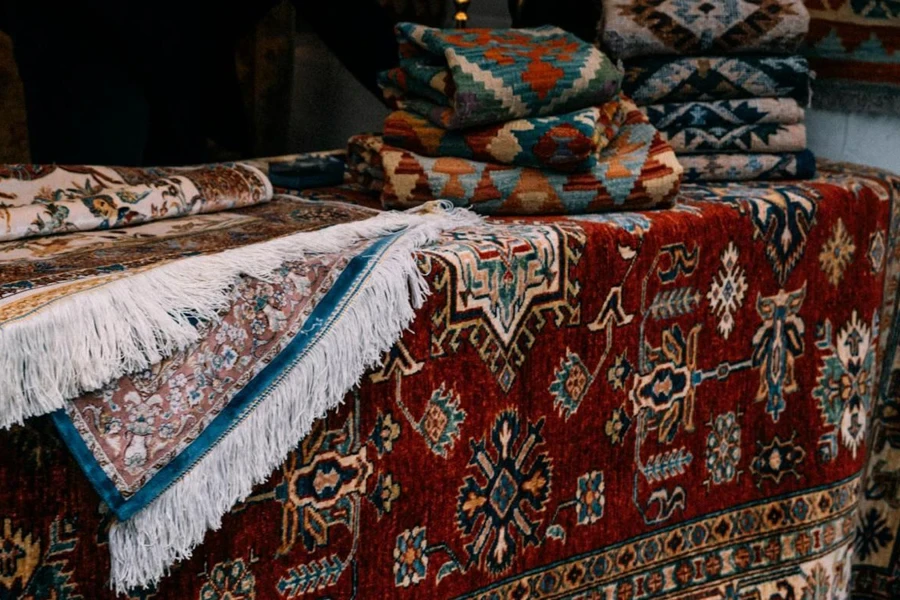
Top sellers driving market trends
Leading companies such as Mohawk Industries Inc., Shaw Industries Group Inc., and Genie Carpet Manufacturers are at the forefront of driving market trends in the rug industry. Mohawk Industries is renowned for its extensive range of high-quality rugs that combine traditional craftsmanship with modern design. Shaw Industries focuses on innovation, offering products that incorporate advanced materials and sustainable practices. Genie Carpet Manufacturers is noted for its customization capabilities, allowing consumers to tailor rugs to their specific needs and preferences. These companies consistently lead the market by setting high standards in quality, design, and functionality, according to Future Market Insights.
Product innovations from these top sellers are key to meeting evolving consumer demands. Mohawk Industries, for instance, has introduced eco-friendly rug lines made from recycled materials, catering to the growing demand for sustainable home decor. Shaw Industries has developed advanced stain-resistant and easy-to-clean rugs, ideal for households with pets and children. Genie Carpet Manufacturers offers a wide variety of customizable options, from color and pattern selection to specific dimensions, providing consumers with unique and personalized decor solutions. According to Durian, these innovative products not only enhance the aesthetic appeal of spaces but also offer practical benefits that align with modern lifestyles.
Successful marketing and distribution strategies are crucial for these companies to maintain their market leadership. E-commerce platforms and online retail have become essential channels for reaching a broader audience. Shaw Industries has leveraged digital marketing and online sales to expand its market reach, providing customers with convenient access to its product range. Mohawk Industries utilizes a combination of online and offline strategies, including partnerships with major retailers and home improvement stores, to maximize its market presence. Genie Carpet Manufacturers focuses on direct-to-consumer sales through its website, offering detailed customization tools and virtual consultations to enhance the customer experience. According to Home Looks, these strategies have enabled these companies to engage with consumers effectively, adapt to changing market dynamics, and drive growth in the competitive rug market.
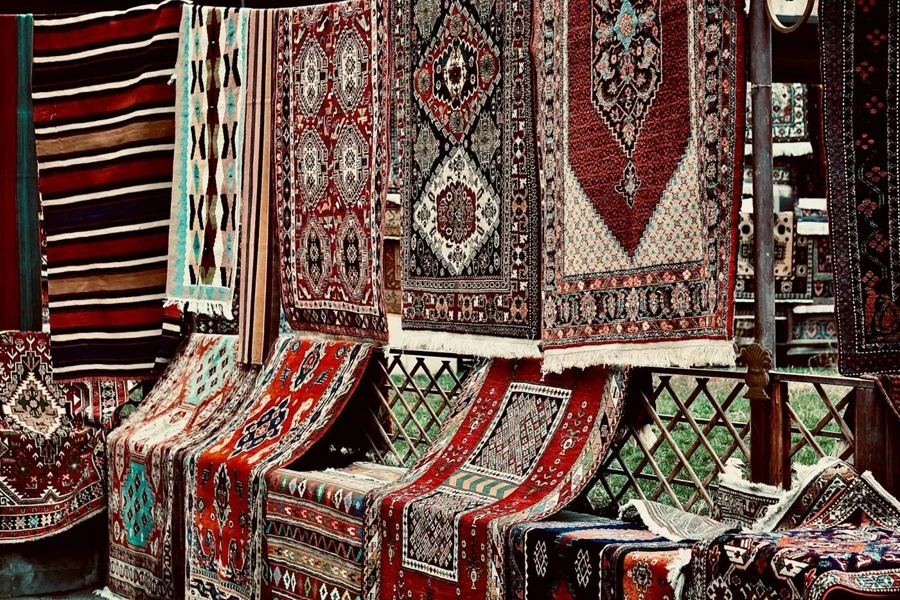
Conclusion
Rug sets are more than just floor coverings; they are essential elements in modern interior design, offering a blend of functionality and aesthetic appeal. As the market continues to grow, influenced by trends like sustainability and technological integration, it becomes crucial for consumers and industry players to stay updated with the latest innovations. Embracing eco-friendly materials, advanced designs, and smart home features will ensure that rug sets continue to enhance living spaces effectively.
Moreover, the increasing popularity of bold patterns, textural elements, and vintage styles indicates a shift towards more personalized and dynamic interior spaces. Rugs not only add warmth and comfort but also play a significant role in defining and anchoring different areas within a room. As consumers place greater emphasis on home aesthetics, the demand for versatile and stylish rug sets is expected to rise. This evolving landscape highlights the importance of rugs in creating stylish, comfortable, and personalized environments, making them indispensable in contemporary home decor. Staying abreast of these trends and innovations will be key for industry players looking to meet the needs of modern consumers and maintain a competitive edge in the market.
